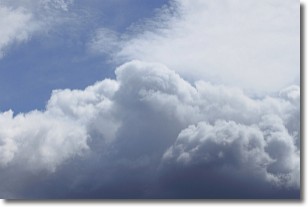Weather Alerts for Oregon
1. Fire Weather Watch for: Northern Willamette National Forest; Southern Willamette National Forest
2. Fire Weather Watch for: Southern Oregon Cascades; Klamath Basin and the Fremont-Winema National Forest; South Central Oregon Desert including the BLM Land in Eastern Lake and Western Harney Counties
3. Fire Weather Watch for: Umpqua Basin
4. Fire Weather Watch for: Umpqua National Forest
5. Heat Advisory for: Eastern Columbia River Gorge of Oregon; Foothills of the Southern Blue Mountains of Oregon; North Central Oregon; Eastern Columbia River Gorge of Washington; Simcoe Highlands
6. Heat Advisory for: Lower Columbia Basin of Oregon; Foothills of the Northern Blue Mountains of Oregon; Kittitas Valley; Yakima Valley; Lower Columbia Basin of Washington; Foothills of the Blue Mountains of Washington
7. Red Flag Warning for: Burns BLM; Southern Grasslands
8. Red Flag Warning for: Burns BLM; Southern Grasslands
9. Red Flag Warning for: Central Blue Mountains; Southern Blue Mountains
10. Red Flag Warning for: Central Mountains of Oregon; Southern Deschutes National Forest
11. Red Flag Warning for: Central Mountains of Oregon; Southern Deschutes National Forest
12. Red Flag Warning for: Northern Deschutes National Forest
13. Red Flag Warning for: Northern Willamette National Forest; Southern Willamette National Forest
14. Red Flag Warning for: Northwestern Vale BLM
15. Red Flag Warning for: Southern Oregon Cascades; Klamath Basin and the Fremont-Winema National Forest; South Central Oregon Desert including the BLM Land in Eastern Lake and Western Harney Counties
16. Red Flag Warning for: Southern Oregon Cascades; Klamath Basin and the Fremont-Winema National Forest; South Central Oregon Desert including the BLM Land in Eastern Lake and Western Harney Counties
17. Red Flag Warning for: Umpqua National Forest
18. Red Flag Warning for: Western Forested Blue Mountains
19. Red Flag Warning for: Western Rogue Basin including the Illinois Valley; Siskiyou Mountains; Eastern Rogue Valley
20. Special Weather Statement for: Central and Eastern Lake County
21. Special Weather Statement for: Harney County
Want more detail? Get the Complete 7 Day and Night Detailed Forecast!
Current U.S. National Radar--Current
The Current National Weather Radar is shown below with a UTC Time (subtract 5 hours from UTC to get Eastern Time).

National Weather Forecast--Current
The Current National Weather Forecast and National Weather Map are shown below.

National Weather Forecast for Tomorrow
Tomorrow National Weather Forecast and Tomorrow National Weather Map are show below.

North America Water Vapor (Moisture)
This map shows recent moisture content over North America. Bright and colored areas show high moisture (ie, clouds); brown indicates very little moisture present; black indicates no moisture.

Weather Topic: What are Nimbostratus Clouds?
Home - Education - Cloud Types - Nimbostratus Clouds
 Next Topic: Precipitation
Next Topic: Precipitation
A nimbostratus cloud is similar to a stratus cloud in its formless,
smooth appearance. However, a nimbostratus cloud is darker than a stratus cloud,
because it is thicker.
Unlike a stratus cloud, a nimbostratus cloud typically brings with it the threat
of moderate to heavy precipitation. In some cases, the precipitation may evaporate
before reaching the ground, a phenomenon known as virga.
Next Topic: Precipitation
Weather Topic: What is Rain?
Home - Education - Precipitation - Rain
 Next Topic: Shelf Clouds
Next Topic: Shelf Clouds
Precipitation in the form of water droplets is called rain.
Rain generally has a tendency to fall with less intensity over a greater period
of time, and when rainfall is more severe it is usually less sustained.
Rain is the most common form of precipitation and happens with greater frequency
depending on the season and regional influences. Cities have been shown to have
an observable effect on rainfall, due to an effect called the urban heat island.
Compared to upwind, monthly rainfall between twenty and forty miles downwind of
cities is 30% greater.
Next Topic: Shelf Clouds
Current conditions powered by WeatherAPI.com




